What is Mulching and Mulch Mowing
- March 18, 2024
- 0 comment
Dive into the essentials of What is Mulching and Mulch Mowing to uncover the transformative effects of these gardening practices. Discover how applying a protective layer of mulch can safeguard and enrich your soil, and how the eco-friendly method of mulch mowing repurposes grass clippings as vital nutrients, fostering a healthier, more vibrant lawn.
What is Mulching?
Mulching is a fundamental practice in ecological horticulture that involves the application of organic matter, such as leaves or grass clippings, to the soil. This practice serves two main purposes: protecting the soil and providing it with nutrients. When mulch is applied, it forms a protective layer over the soil, shielding it from the impact of heavy rain, strong winds, and intense sunlight. This protective barrier helps to prevent soil erosion, maintain soil moisture levels, and regulate soil temperature. Additionally, as the mulch breaks down over time, it releases valuable nutrients into the soil, enriching it and promoting healthy plant growth.

Mulching is a versatile technique that can be used in virtually any garden setting. Whether you’re tending to a vegetable garden, flower bed, or landscaped area, mulching can offer numerous benefits. For home gardeners, in particular, mulching is a cost-effective and time-saving practice that can enhance the overall health and vitality of your garden.
How Does Mulching Work?
Mulching is a beneficial practice that works by creating a protective barrier over the soil. This barrier helps to retain moisture in the soil by shading it from direct sunlight and reducing evaporation. As a result, water can be stored more effectively in the ground, keeping the soil moist and preventing it from drying out too quickly. Additionally, mulch helps to regulate soil temperature, keeping it cooler in hot weather and warmer in cold weather, which creates a more stable environment for plant roots.
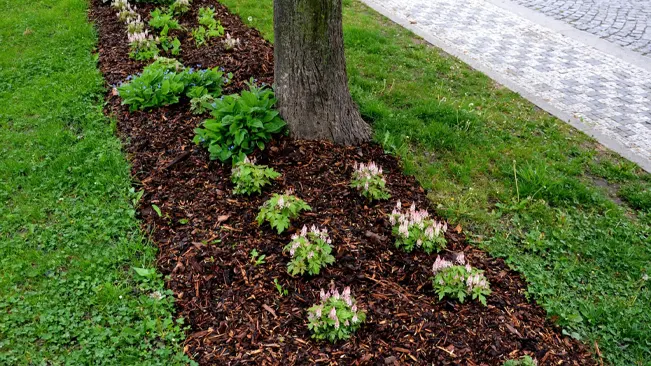
Moreover, mulching provides a layer of protection for plants against the impact of heavy rain and extreme temperatures. The mulch acts as a buffer, absorbing the force of heavy raindrops and preventing soil erosion. In colder climates, mulch can provide insulation for plant roots, protecting them from frost and freezing temperatures. As the mulch breaks down over time, it also improves soil fertility by adding organic matter and nutrients, which are essential for healthy plant growth.
Types of Mulch
Organic Mulch
- Wood Chips: Wood chips are a popular choice for mulching. They are made from chipped or shredded branches, bark, or wood waste. Wood chips are effective at retaining moisture and suppressing weeds. However, they can deplete nitrogen from the soil as they decompose, so it’s important to replenish nitrogen periodically.
- Straw: Straw is another organic mulch that is commonly used in gardening. It is lightweight and easy to apply, making it ideal for covering large areas. Straw breaks down slowly, providing long-lasting weed control. However, it may contain weed seeds, so it’s important to use weed-free straw.
- Leaves: Leaves are a free and readily available mulching material. They can be used whole or shredded. Shredded leaves break down quickly, adding organic matter to the soil. However, whole leaves can mat together and prevent water from reaching the soil, so it’s best to shred them before use.
- Grass Clippings: Grass clippings can also be used as mulch. They are rich in nitrogen and break down quickly, adding nutrients to the soil. However, they should be used sparingly and mixed with other materials to prevent matting and odor.
- Compost: Compost is a nutrient-rich soil amendment that can also be used as mulch. It improves soil structure, retains moisture, and suppresses weeds. However, it can be expensive to purchase in large quantities, so many gardeners make their own compost.
Inorganic Mulch
- Plastic Mulch: Plastic mulch is a popular choice for vegetable gardens. It suppresses weeds, retains moisture, and warms the soil, promoting early plant growth. However, it does not add nutrients to the soil and can be difficult to remove once in place.
- Rubber Mulch: Rubber mulch is made from recycled tires. It is long-lasting, lightweight, and provides effective weed control. However, it does not break down, so it does not improve soil health.
- Stone or Gravel: Stone or gravel mulch is a decorative option that provides effective weed control and does not decompose. However, it can heat up quickly in the sun, potentially damaging plant roots.
What is Mulch Mowing?
Your garden serves as a valuable extension of your home, especially during the spring and summer months when you spend quality time outdoors. A key area of focus in your garden is the lawn, which should be not only durable but also neat, tidy, and most importantly, healthy.
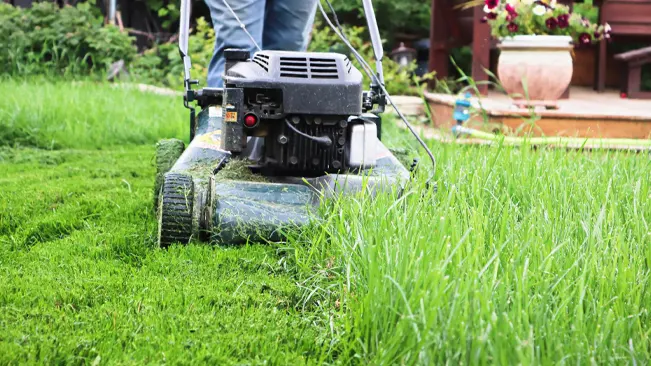
Mulching lawn mowers play a vital role in maintaining a healthy lawn by recycling grass clippings. These mowers finely cut and recut the grass, distributing the clippings within the standing grass. As these clippings wilt and decompose, they provide essential nutrients to the soil, promoting healthier grass growth. This method of recycling or mulching grass clippings not only benefits the lawn but also saves time. With no need to stop and empty the grass collector or bag up clippings for disposal, you can focus more on enjoying your garden and less on maintenance tasks.
Benefits of Mulch Mowing
- Collection-Free and Waste-Free Operation Mulching mowers differ from traditional mowers in that they recycle grass clippings as you mow, eliminating the need for collection and disposal. These mowers finely chop the clippings into small particles and push them down into the turf, out of sight. This process eliminates the need to empty grass bags or collectors and makes trips to the compost bin unnecessary. As a result, you can achieve a perfectly manicured lawn finish that is 30% quicker.
- Environmentally Friendly Operation Research indicates that a half-acre lawn can produce up to 4.5 tonnes of grass clippings annually. Failing to recycle these clippings would be a significant waste of resources. Collecting and disposing of this grass also consumes unnecessary time and effort when a more sustainable alternative is available.
- Combined Cutting and Fertilization Mulching mowers not only recycle grass clippings but also feed the soil in the process. This eliminates the need for additional fertilizers or “weed and feed” products. As the clippings decompose, they release nutrients and fertilizers back into the soil, effectively fertilizing the lawn while mowing. The small clippings produced by mulching mowers decompose quickly, enriching your lawn’s soil.
- Promotes a Healthier-Looking Lawn Decomposing grass clippings return valuable nitrogen and other nutrients to the soil. The decomposed clippings form humus, which helps loosen compacted soils, allowing more oxygen and nutrients to reach the grass roots. Humus also improves sandy soils by enhancing their moisture retention.
- Feeds Soil Microorganisms Healthy soil teems with microorganisms, earthworms, and beneficial insects. Regularly feeding these organisms with organic matter can enhance soil quality and the health of your lawn. The finely chopped grass from a mulching deck serves as a feast for these tiny organisms. The smaller the organic matter particles, the faster they decompose and release valuable elements and humus into the soil, resulting in a better-looking, greener lawn.
- Reduces Thatch Contrary to popular belief, mulching reduces thatch and does not contribute to its buildup. While simply cutting and leaving long grass on a lawn can create conditions for thatch accumulation, proper mulching reduces thatch by promoting a healthier soil and root zone. The microorganisms that thrive on decomposing mulched clippings also help break down thatch.
- Enhances Lawn Appearance Arguably the most significant benefit of mulch mowing is the improved appearance of your lawn. By enhancing soil texture and content, reducing disease, and controlling thatch, mulching leads to a fuller, healthier-looking lawn.
Mulching Material
Shredded Wood Matter
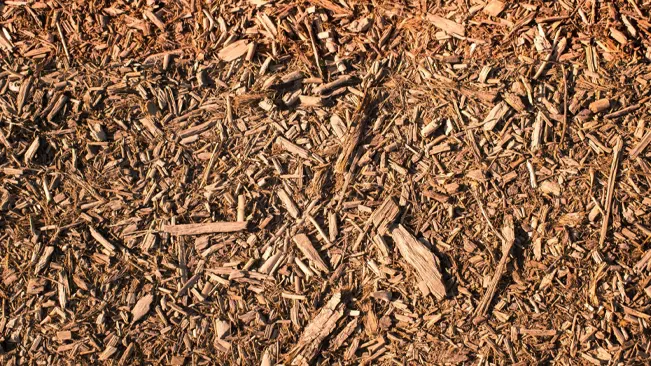
Shredded wood matter serves multiple purposes in mulching. It is particularly suitable for areas under rooted hedges and trees, providing a protective layer that retains moisture and suppresses weeds. Additionally, it is ideal as a path covering, offering a natural and visually appealing alternative to traditional paths. As the shredded wood matter breaks down over time, it releases nitrogen into the soil, promoting plant growth and overall soil health.
Grass Cuttings
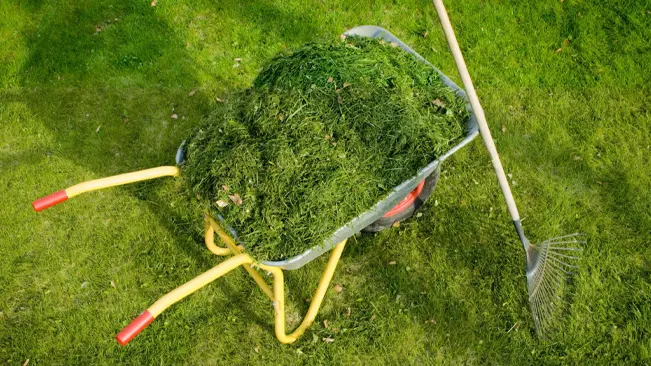
Grass cuttings are a versatile mulching material suitable for use in all garden areas. When using grass cuttings as mulch, it is recommended to apply a layer about 2 to 3 cm thick on flowerbeds and around plants. However, it is important to avoid thicker layers, as this can cause the cuttings to clump together and suffocate the soil. Furthermore, it is crucial to avoid using diseased grass or grass with seeds, as this can introduce pathogens or weeds into your garden.
Leaves
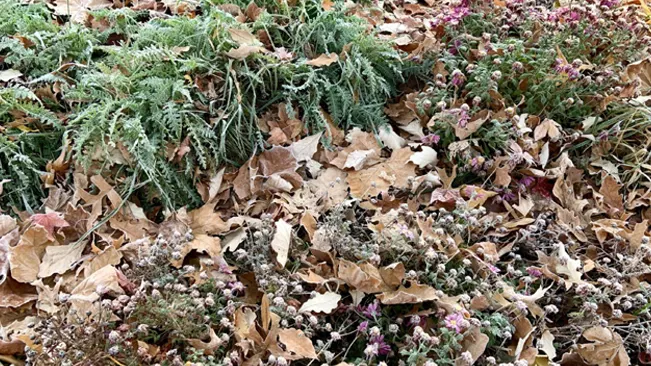
Leaves are a readily available and effective mulching material, with different types of trees providing varying benefits. Leaves from birch, maple, beech, and fruit trees are suitable for mulching and can be used freely. However, leaves from nut, chestnut, and oak trees should be used in moderation and mixed with other leaves. This is because these leaves contain high levels of tannic acid, which can be slow to break down and may disrupt the soil balance if used excessively.
Chipped Bark
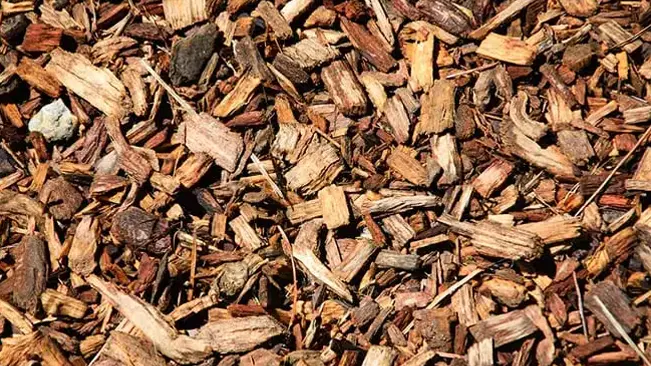
Chipped bark is a versatile mulching material that serves both aesthetic and practical purposes. It effectively suppresses thistles and weeds, making it suitable for use in paths and around flowers, fruit trees, and bushes. However, it is not recommended for use in vegetable gardens or around shrubs, as it can lead to high levels of tannic acid in the soil. To benefit fully from its weed-suppressing properties, it is advised to apply a layer of chipped bark at least 10 cm thick.
Common Mulching Mistakes to Avoid
- Over-mulching: Applying mulch too thickly can suffocate plants and prevent water and air from reaching the roots. A layer of 2 to 4 inches is usually sufficient.
- Volcano Mulching: Piling mulch against plant stems or tree trunks (creating a “volcano” shape) can promote rot and pest infestation. Keep mulch a few inches away from plant bases.
- Using the Wrong Mulch: Not all mulches are suitable for every application. Some mulches, like bark or wood chips, can be too acidic for certain plants. Research the best mulch for your specific needs.
- Neglecting Weed Control: Applying mulch over existing weeds without proper weed control can lead to continued weed growth. Remove weeds before mulching or use a weed barrier.
- Ignoring Mulch Depth: Applying too little mulch won’t provide adequate protection and benefits, while applying too much can lead to issues like mold growth and plant suffocation.
- Mulching Too Early: Mulching too early in the season can prevent the soil from warming up, which can delay plant growth. Wait until the soil has warmed up before applying mulch.
- Not Allowing for Mulch Breakdown: Some mulches, like straw or wood chips, need time to break down and enrich the soil. Avoid removing mulch too soon, as it can limit its benefits.
Difference Between Mulching and Mulch Mowing
Mulching typically involves applying a layer of mulch, such as organic matter or inorganic materials, to the soil surface around plants. This helps retain moisture, suppress weeds, regulate soil temperature, and improve soil health. Mulching is commonly done in flower beds, around trees and shrubs, and in vegetable gardens.
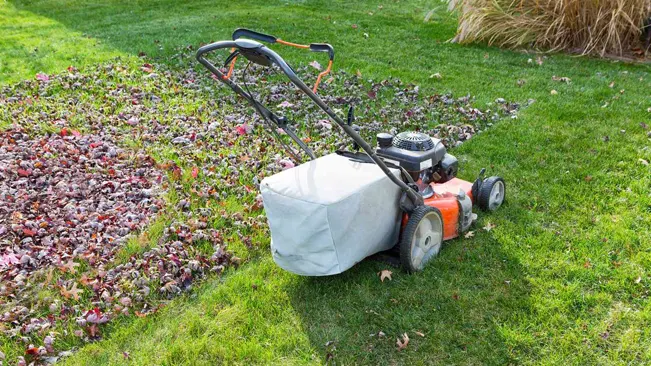
Mulch mowing, on the other hand, is a technique used specifically for mowing grass. With mulch mowing, a special mower is used that cuts the grass into very fine pieces, which are then dispersed back onto the lawn. These finely chopped grass clippings act as a natural mulch, providing nutrients to the soil as they decompose. Mulch mowing can help improve soil health, reduce the need for fertilizer, and enhance the overall appearance of the lawn.
Mulching Techniques Tips
- Prepare the Soil: Before applying mulch, remove any weeds or debris from the area and loosen the soil to improve aeration and water penetration.
- Apply the Right Amount: Apply mulch to a depth of 2 to 4 inches for most applications. Avoid piling mulch against plant stems or tree trunks, as this can promote rot and pest infestation.
- Mulch Around Plants: Spread mulch evenly around plants, extending it to the drip line for trees and shrubs. Leave a small gap around the base of plants to prevent moisture buildup and stem rot.
- Use the Right Mulch: Choose a mulch that suits your needs, such as organic mulches like wood chips, straw, or compost, or inorganic mulches like gravel or landscape fabric.
- Maintain Mulch: Periodically check mulch for compaction or decomposition and replenish as needed to maintain the desired depth.
- Use a Mulching Mower: Mulching mowers are designed to cut grass into fine pieces that can easily decompose. Use a mower with a mulching blade or attachment for best results.
- Mow Regularly: Mulch mow your lawn regularly, ideally when the grass is dry, to ensure an even cut and better mulch distribution.
- Adjust Mower Height: Set your mower to the correct height to avoid cutting off more than one-third of the grass blade length. This helps maintain a healthy lawn and prevents grass clippings from clumping.
- Overlap Mowing Passes: Overlap each pass slightly to ensure thorough mulch distribution and an even lawn appearance.
- Leave Clippings on the Lawn: Allow the grass clippings to remain on the lawn after mulch mowing. They will decompose quickly and return valuable nutrients to the soil.
Conclusion
In conclusion, proper mulching is essential for maintaining a healthy garden and landscape. By following the right techniques and avoiding common mistakes, such as using the wrong mulching equipment or applying mulch too thickly, you can ensure that your plants thrive. Mulching not only helps retain moisture and suppress weeds but also adds nutrients to the soil, promoting healthy plant growth. Whether you’re mulching flower beds, vegetable gardens, or lawns, taking the time to mulch properly can lead to a more beautiful and sustainable landscape.
FAQs
1. How does mulch mowing benefit my lawn?
Mulch mowing returns nutrients to the soil, improves soil health, reduces the need for fertilizers, and helps retain moisture in the lawn.
2. Will mulch mowing leave clumps of grass on my lawn?
Properly mulch mowing with a sharp blade should not leave clumps of grass. However, mowing when the grass is too wet or using a dull blade can lead to clumping.
3. Do I need a special mower for mulch mowing?
While you can mulch mow with a regular mower, using a mower with a mulching blade and a mulching kit can improve the effectiveness of mulch mowing.
4. How often should I mulch mow my lawn?
Mulch mowing can be done every time you mow your lawn, as long as you follow the proper techniques to avoid overloading the lawn with clippings.
5. Will mulch mowing create thatch in my lawn?
Contrary to popular belief, mulch mowing does not contribute to thatch buildup. Thatch is primarily composed of stems and roots, not grass clippings.

Joel Cunningham
Forestry AuthorI'm Joel Cunningham, an expert in pruning and weed management with over a decade of experience. My skills are rooted in formal training and extensive practice, focusing on advanced pruning techniques and efficient weed control. I'm known for my quality work, precision, and deep understanding of plant health and soil dynamics. My contributions extend to educational initiatives where I share sustainable practices and advice, establishing myself as a reliable and authoritative figure in the gardening community.


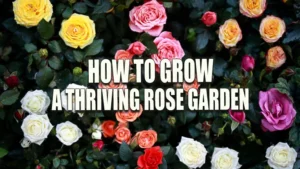
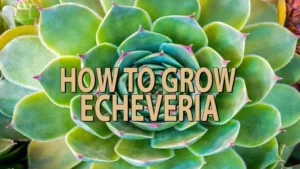
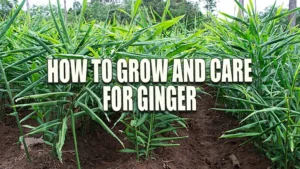
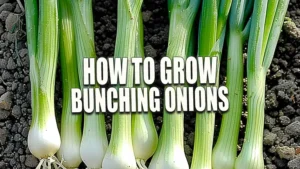
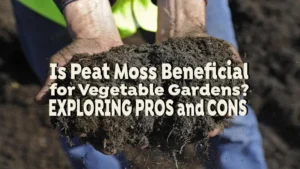


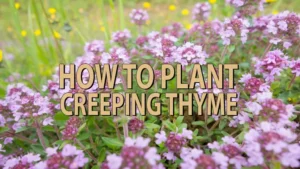
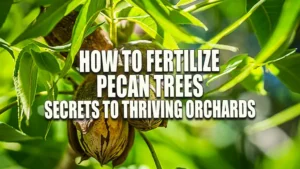

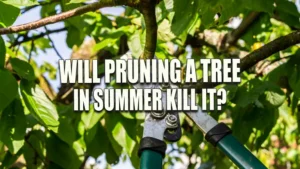
Leave your comment